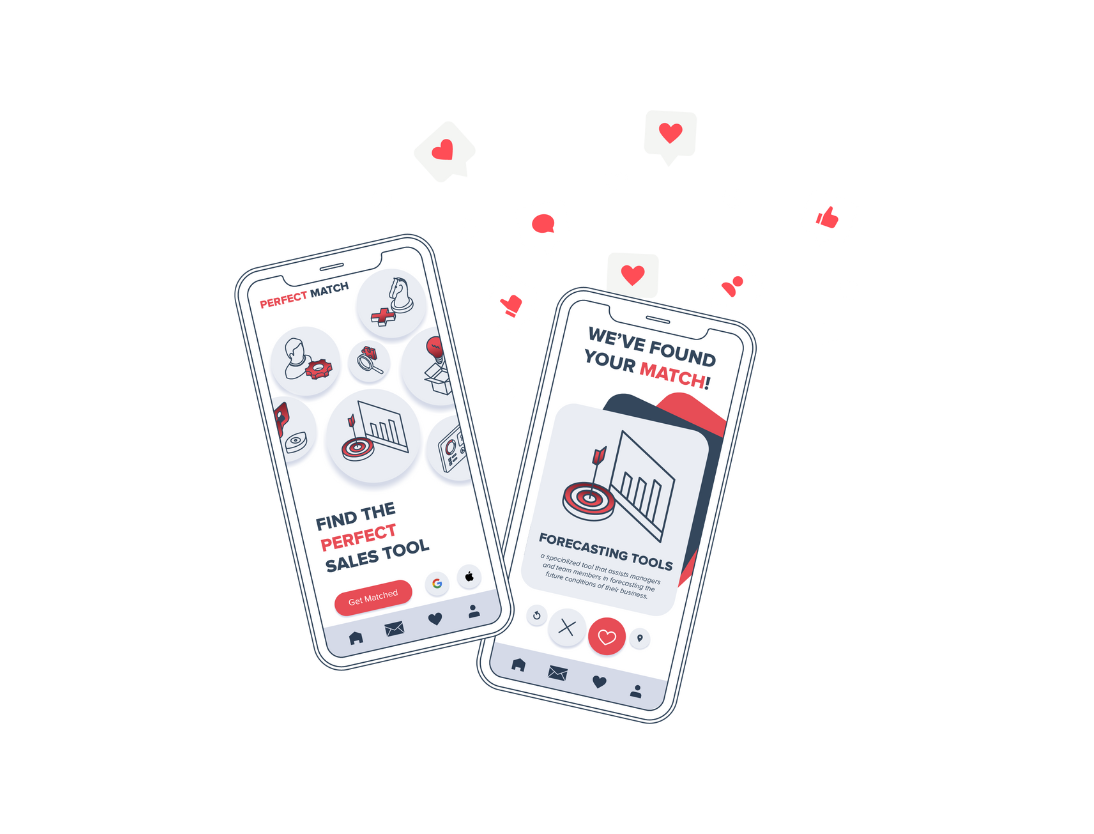In this article, we will explore the concept of HubSpot solution architecture, the role of HubSpot Solutions Architects and the value of 24/7 support.
Solution architecture, known as the foundational design for a system, plays a crucial role in optimizing various technological pursuits. Its importance transcends the mere streamlining of interactions and processes; it has the power to accelerate the success of projects.
In an era of escalating competition, organizations are dedicated to achieving their objectives. In this context, a well-structured system is no longer just a utilitarian tool—it transforms into a strategic asset. This article aims to establish the concept of solution architecture, with a subsequent exploration of its implementation specifically within the realm of HubSpot.
What is HubSpot solution architecture?
HubSpot solution architecture is the strategic framework that guides the design, implementation, and management of a company's HubSpot CRM system.
Just as a well-architected building maximizes space, light, and functionality, a well-structured HubSpot solution architecture optimizes data flow, collaboration, and insights. If we were comparing solution architecture to building a house, a successful architect would ensure the foundations are strong, they would ensure it's access and privacy is well built out, and they would ensure that the people living in the house can use the house for its intended purpose.
In the upcoming sections, we'll take a closer look at the fundamental elements of HubSpot solution architecture, its influence on business performance, and the significance of frameworks like TOGAF in the context of HubSpot solution architecture exploration.
Key components and elements of HubSpot solution architecture
At its core, HubSpot solution architecture is a structured approach that weaves together various elements to create a seamless and agile CRM ecosystem. These elements include:
- CRM infrastructure and data model: The data model defines how data is organized, stored, and retrieved. A carefully designed data model ensures that information flows effortlessly, providing teams with a holistic view of customer interactions.
- Interconnection of Hubs: HubSpot's marketing, sales, and service hubs are like specialized departments within a company. Solution Architecture breaks down silos, promoting cross-functional collaboration. For instance, the marketing team's insights can inform sales strategies, leading to more personalized interactions and higher conversion rates.
- Custom objects and data schemas: Every business has unique needs. Custom objects and data schemas allow you to tailor your HubSpot system to these needs. This flexibility ensures that your architecture evolves alongside your business, accommodating changes without disrupting operations.
A well crafted HubSpot solution architecture can have far-reaching effects on business performance, influencing multiple facets. In the upcoming section, we will explore these impacts and delve into how a well-structured architecture can transform various aspects of your business operations.
The impact of CRM architecture on business performance
A well designed HubSpot solution architecture can yield profound impacts on business performance, influencing various aspects:
- Efficiency: Streamlined processes mean less time spent navigating data and more time engaging with customers. This efficiency translates into better customer experiences and increased productivity.
- Insights: When data flows seamlessly across hubs, you gain a comprehensive view of customer interactions. This empowers your teams to make informed decisions, offer personalized solutions, and predict customer needs.
- Scalability: As your business grows, so does your customer data. A robust architecture can handle increased volumes without compromising on speed or data integrity.
- Innovation: With a solid foundation in place, you can experiment with new strategies, technologies, and campaigns. The architecture supports your agility, allowing you to adapt quickly to changing market dynamics.
- Importance of expert support and change control: Creating an effective CRM architecture is not a one-time task; it's an ongoing process. This is where the expertise of a Solutions Architect becomes invaluable. Their role extends beyond initial design to continuous refinement, adaptation, and troubleshooting. Change control is a critical aspect, ensuring that updates and modifications are implemented in a controlled manner to prevent disruptions.
- Governance and compliance: Ensuring the governance of your CRM is paramount. Governance practices need to be built into the architecture of your solution, ensuring that the right permissions are in place, and legal and regulatory standards are met.
In a nutshell, the CRM architecture is the strategic backbone of your CRM ecosystem. It's the guiding force that turns HubSpot's tools into a symphony of efficiency, collaboration, and growth.
With a well-structured architecture and dedicated support, you're not just managing data – you're sculpting exceptional customer experiences and propelling your business towards success.
The role of an enterprise architecture methodology
Within the domain of CRM architecture, where the optimisation of processes and the alignment of technology with business objectives are paramount, embracing an established architecture methodology becomes a crucial practice.
As an illustration, consider The Open Group Architecture Framework (TOGAF), a renowned framework recognised for its structured approach to designing, planning, implementing, and governing enterprise architectures.
This methodology presents a comprehensive strategy for constructing enterprise architectures that seamlessly meld with business strategies and aspirations. It lays out a methodical process that ensures harmony between technical architecture and the overarching vision of the organization.
By adopting the principles of a robust architecture methodology like TOGAF, businesses can elevate the efficacy and sustainability of their CRM ecosystems. This approach emphasizes the synchronization of technology with business goals, enabling Solutions Architects to create sturdy structures that not only cater to immediate needs but also provide a platform for future growth.
Such architecture methodologies ensure that architectural decisions are rooted in a profound understanding of the business's context, ensuring that chosen solutions are not only technically sound but also strategically aligned.
The infusion of such methodologies into CRM architecture transforms the process from simple data management into a strategic endeavor that propels innovation, streamlines efficiency, and places customers at the core.
Exploring the HubSpot system architecture
To delve into the intricacies of HubSpot solution architecture, it's essential to first understand the underlying structure of HubSpot's CRM ecosystem.
This intricate system seamlessly interconnects various hubs and objects, forming a cohesive framework that optimizes data organization and fosters cross-functional collaboration.
Let's explore how these components interact and contribute to the overall efficiency of your CRM ecosystem.
HubSpot's unified CRM infrastructure and data model
At the core of HubSpot's architecture lies a unified Customer Relationship Management (CRM) infrastructure, supported by a robust data model. This data model serves as the blueprint for how information is organized, stored, and retrieved within your HubSpot environment.
By structuring data in a logical and intuitive manner, the data model ensures that insights are readily accessible, empowering teams to make informed decisions.
Interconnection of Marketing, Sales, and Service Hubs
HubSpot's CRM ecosystem is composed of specialized hubs that cater to distinct aspects of customer interactions: marketing, sales, and service. These hubs work harmoniously, sharing insights and data to create a comprehensive understanding of each customer's journey.
For instance, a potential lead identified by the marketing hub can seamlessly transition into the sales hub, where sales teams can build upon the relationship established during the marketing phase. This interconnection ensures that customer interactions are consistent and informed across various departments. For example, it enables a smooth transition of information from the sales environment to onboarding teams and seamlessly facilitates support team involvement.
Enhancing data organization through custom objects and data schemas
In the pursuit of tailoring your CRM ecosystem to align with your business's unique processes, custom objects and data schemas play a pivotal role. Custom objects allow you to create specialized records and fields that cater specifically to your organization's needs. This flexibility means that you're not constrained by predefined categories; instead, you can design your architecture to suit your exact requirements.
Data schemas further enhance data organization by structuring how information is stored and related. This systematic arrangement ensures that data flows smoothly across your ecosystem, promoting consistency and accuracy. For instance, custom objects can be designed to capture intricate details relevant to your business, be it customer preferences, product specifications, or service history.
By integrating these custom objects and data schemas into your architecture, you're creating a system that evolves in tandem with your business's growth and changing dynamics. This adaptability ensures that your HubSpot solution architecture remains relevant and effective, enabling you to gather insights, drive strategies, and engage customers with precision.
In essence, the HubSpot System Architecture thrives on the synergy between its interconnected hubs, the strategic deployment of custom objects, and the meticulous design of data schemas. This holistic approach optimizes data flow, collaboration, and insights, empowering your teams to deliver exceptional customer experiences while propelling your business toward its goals.
The role of HubSpot solutions architect
Creating an effective HubSpot solution architecture is not a one-time task; it's an ongoing process. This is where the expertise of a HubSpot Solutions Architect becomes invaluable.
Their role extends beyond initial design to continuous refinement, adaptation, and troubleshooting. Change control is a critical aspect, ensuring that updates and modifications are implemented in a controlled manner to prevent disruptions.
Responsibilities of a HubSpot Solutions Architect include:
- Designing: The Solutions Architect is the visionary behind the architecture. They collaborate closely with stakeholders to understand the company's objectives, challenges, and growth trajectory. Using this insight, they design a HubSpot system that serves as a strong foundation for achieving these goals. This involves defining the interconnections between marketing, sales, and service hubs, as well as structuring custom objects and data schemas tailored to the business's unique needs.
- Integration: A successful HubSpot architecture seamlessly integrates various components to create a cohesive ecosystem. The Solutions Architect ensures that data flows effortlessly between hubs, as well as from other systems used within the business, eliminating data silos and enabling cross-functional teams to collaborate effectively. This integration enhances customer experiences by providing a unified view of interactions and history.
- Optimization: The landscape of business is ever-evolving, and the HubSpot system must evolve alongside it. The Solutions Architect continually optimizes the architecture to adapt to changing business requirements and technological advancements. This might involve refining processes, introducing new tools, or enhancing data analytics capabilities.
- Change management: Implementing changes within a CRM ecosystem requires meticulous planning. The Solutions Architect oversees change management, ensuring that updates, modifications, and integrations are carried out in a controlled manner. This prevents disruptions and maintains the stability of the system and ensures overall governance within the CRM.
- Problem solving: When issues arise within the architecture, the Solutions Architect is the first line of defense. They troubleshoot problems, identify root causes, and implement solutions swiftly. Their expertise prevents downtime and ensures that the system runs smoothly.
- Strategic guidance: Beyond technical expertise, the Solutions Architect provides strategic insights. They understand how the architecture aligns with the company's long-term goals and can recommend adjustments to drive growth. Their role is pivotal in translating technical capabilities into tangible business outcomes.
In essence, a HubSpot Solutions Architect is a bridge between technology and business objectives. They fuse technical expertise with strategic vision, transforming HubSpot into a dynamic engine that propels your business towards success. With their guidance, your HubSpot architecture becomes not just a tool, but a strategic asset that fuels growth and customer satisfaction.
Benefits of 24/7 HubSpot solution architecture Support
The realm of HubSpot solution architecture isn't just about constructing a well-defined blueprint; it's also about nurturing and safeguarding a thriving ecosystem. In this pursuit, having a meticulously structured architecture is only one piece of the puzzle.
To truly harness the potential of your HubSpot system, 24/7 support from experts becomes an indispensable pillar. Here's why this support is the cornerstone of a robust and responsive architecture.
Round-the-clock expert assistance
Issues within your HubSpot system don't adhere to a 9-to-5 schedule. They can emerge at any moment, potentially disrupting your operations and customer interactions, especially when your enterprise has locations spanning different time zones.
Whether it's during your office hours or in the dead of night in another part of the world, 24/7 support ensures that experienced professionals are at your disposal. This immediate access prevents prolonged downtimes and minimizes the impact on your business, offering a reliable lifeline to resolve issues regardless of where your teams are located.
With operations spread across the globe, 24/7 support provides a consistent safety net, guaranteeing that assistance is always available when needed.
Proactive monitoring and maintenance
A healthy HubSpot ecosystem requires continuous vigilance. 24/7 support includes proactive monitoring of your architecture, allowing experts to identify potential issues before they escalate into major disruptions.
Timely interventions not only prevent problems but also maintain the optimal performance of your system. Regular maintenance ensures that your architecture operates at its peak efficiency.
Seamless data integration and consistency
Your business decisions rely heavily on accurate and consistent data. 24/7 support ensures that data flows effortlessly between different hubs – marketing, sales, and service, as well as other critical systems within your business. This seamless integration prevents discrepancies and ensures data consistency across your operations. With reliable information at your fingertips, your teams can make informed choices that drive results.
In a landscape where downtime comes at a high cost and data integrity is paramount, 24/7 HubSpot solution architecture support stands as a shield against disruptions.
It's an investment that not only safeguards your architecture but also propels your business forward. With this support, you're not just managing technology – you're steering your CRM ecosystem toward a future of resilience, responsiveness, and success.
Why you might need HubSpot solution architecture support
Businesses may require HubSpot solution architecture support for several reasons. Here are different scenarios where enlisting HubSpot solution architecture support becomes crucial:
- Managing complex configurations and integrations: As your business grows, so do the intricacies of your HubSpot system. Integrating multiple tools, automating workflows, and ensuring data consistency can become overwhelming. HubSpot solution architecture support helps you navigate these complexities, ensuring that your architecture remains streamlined, efficient, and well-integrated.
- Leveraging expertise for strategic decision-making: HubSpot solution architecture is not just about technicalities – it's about aligning your architecture with your business strategy. Solutions Architects bring strategic insights to the table, helping you make informed decisions that drive growth. Their expertise ensures that your HubSpot system supports your long-term objectives.
- Ensuring compliance with best practices, industry standards and regulations: The CRM landscape is subject to ever-evolving best practices and industry standards. Adhering to these is not only essential for efficiency but also for security and data protection. HubSpot solution architecture support ensures that your system remains compliant, safeguarding your business and customer data.
- Designing for business growth and expansion: A well-designed HubSpot architecture should be scalable to accommodate your business's growth trajectory. As your lead generation, customer interactions, and data volumes increase, your architecture needs to adapt without sacrificing performance. Solution Architecture support ensures that your system remains robust and agile in the face of growth.
- Scaling up for lead generation and sales: The ultimate goal of a CRM ecosystem is to facilitate effective lead generation and sales conversions. With HubSpot solution architecture support, you can optimize your system to handle higher volumes of leads, ensuring that no potential customer falls through the cracks and that your sales team is empowered to convert opportunities into revenue.
- Optimizing processes for customer interactions: Customers today expect swift and personalized interactions. To deliver this level of service, your HubSpot architecture needs to be finely tuned. Solution Architecture support helps you optimize processes, making it easier for your teams to engage with customers promptly and effectively.
In essence, HubSpot solution architecture support is your ticket to overcoming the challenges that come with managing a dynamic and evolving CRM ecosystem.
It's the compass that guides you through complexity, the partner that enables your strategic vision, and the assurance that your HubSpot system is not just a tool, but a catalyst for your business's success.
Whether you're navigating growth, seeking insights, or aiming to streamline operations, HubSpot solution architecture support is your secret weapon for transforming potential into tangible results.
Huble's 24/7 HubSpot solution architecture & Change Control
When it comes to your HubSpot environment's architecture, having the right guidance and support can make all the difference. Our HubSpot Solutions Architect takes on the role of a consultant, working to optimize and maintain your HubSpot ecosystem. This includes comprehensive documentation of your architecture, making necessary adjustments to data schemas, and refining your overall HubSpot configuration.
At Huble, we understand that your HubSpot environment isn't just a tool – it's the backbone of your operations. That's why our 24/7 HubSpot solution architecture & Change Control services are designed to empower your business with continuous, reliable support.
Whether it's refining your architecture, managing change, or providing expert consultancy, we're here to ensure that your HubSpot ecosystem thrives in alignment with your goals.
Conclusion
With a well-designed architecture and dedicated support, businesses can navigate the complexities of CRM ecosystems, streamline operations, and unlock the true potential of HubSpot's tools.
Partnering with experts like Huble ensures that your HubSpot system remains agile, responsive, and ready to drive your business towards success.
As businesses strive to stay competitive and deliver exceptional customer experiences, investing in HubSpot solution architecture and comprehensive support becomes a strategic imperative.
With Huble's 24/7 HubSpot solution architecture and change control services, you're not just optimizing your CRM ecosystem – you're empowering your business for sustained growth and innovation. Contact our team today to find out more.













